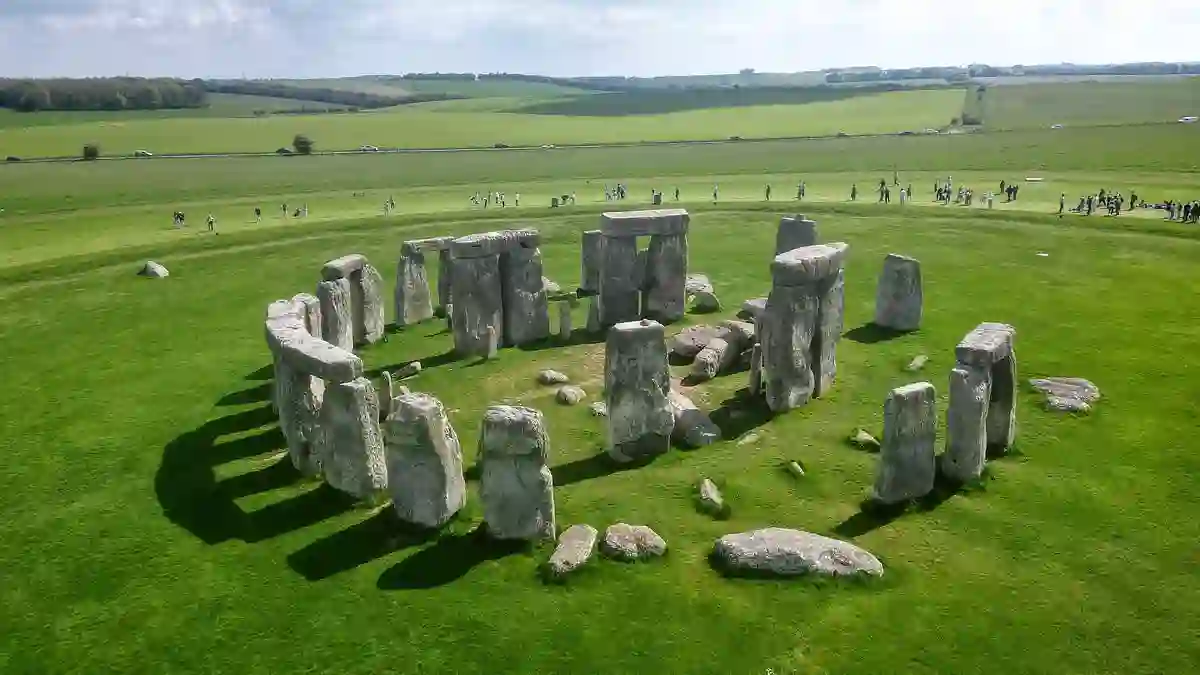For centuries, people have scratched their heads trying to figure out just how and why the bluestones at Stonehenge ended up so far from their source in Wales.
Were they dragged there by humans with grit and rope—or simply dumped by slow-moving glaciers during the Ice Age?
Now, a humble, football-sized rock might finally have tipped the scales in favor of human effort.
The Curious Case of the Newall Boulder
The story begins nearly a century ago, when archaeologists unearthed what’s now known as the Newall boulder near Stonehenge.
It sat quietly in the background of the bluestone debate—until now.
A team led by Professor Richard Bevins from Aberystwyth University recently put this stone under the microscope, literally.
Through detailed chemical and microscopic testing, they discovered that the Newall boulder has a near-identical makeup to rocks found at Craig Rhos-y-Felin in Wales.
That’s over 125 miles away from where the boulder was found.
Why the Findings Matter
If glaciers had dragged the boulder from Wales, we’d expect to see similar stones scattered across the Salisbury Plain.
But researchers point out that this just isn’t the case.
The boulder also bears signs of long burial in the local chalk soil—something you’d expect if it had been carefully placed and left for millennia.
In other words, this rock wasn’t dropped randomly. It was brought here.
Confirming the Human Touch
What’s even more compelling is that the Newall boulder matches another misidentified stone at Stonehenge—Stone 32d.
Once believed to be a type of dolerite, it turns out it’s the same unique type of rock: a foliated rhyolite.
The conclusion? It wasn’t glaciers that delivered these stones to Stonehenge.
It was people. Neolithic builders who, over 5,000 years ago, organized massive efforts to haul multi-ton stones from the Welsh hills all the way to Salisbury.
What About the Counterargument?
Geologist Dr. Brian John has long argued that the Newall boulder shows signs of glacial transport, pointing to abrasion marks on its surface.
But the new team argues those marks could be from natural weathering or even modern handling.
And without other stones like it nearby, the glacial theory just doesn’t hold up.
Their verdict? The glacier argument has “no basis in evidence.”
A Monument Built with Purpose and Precision
Stonehenge isn’t just a pile of rocks—it’s a feat of engineering and intention.
While some of the larger sarsen stones were dragged from only 20 miles away, the smaller bluestones likely took a 240-mile journey by land and river from Wales.
It might sound outrageous, but evidence from recent studies—and from cultures around the world—shows that moving multi-ton stones with ropes, sledges, and teamwork is very possible, even with ancient technology.
Stonehenge’s Layers of Time
Stonehenge wasn’t built in a day. It evolved in four stages over nearly 1,500 years.
From a simple circular ditch and pit arrangement, to a complex structure made up of local and imported stones, the monument changed shape with each generation of builders.
The last major update, around 1500 BCE, saw the iconic horseshoe and circular formations of the bluestones that we recognize today.
The Big Picture: Why Stonehenge?
Although we’re getting closer to understanding how Stonehenge was built, the “why” remains open-ended.
Many experts believe it was a political and religious unifier—a place where ancient Britons gathered to honor ancestors, observe the cosmos, and maybe even seal alliances.
What’s clear is that Stonehenge wasn’t just a monument—it was a national project that likely involved collaboration across tribes and regions.
One Rock, One Giant Leap in Understanding
In the end, the humble Newall boulder might help close the book on one of Stonehenge’s longest-running debates.
Its very existence—and the detailed analysis around it—points to human agency, not natural forces.
It’s another reminder that sometimes, to unlock a prehistoric puzzle, you just need to look closely at the smallest piece.
